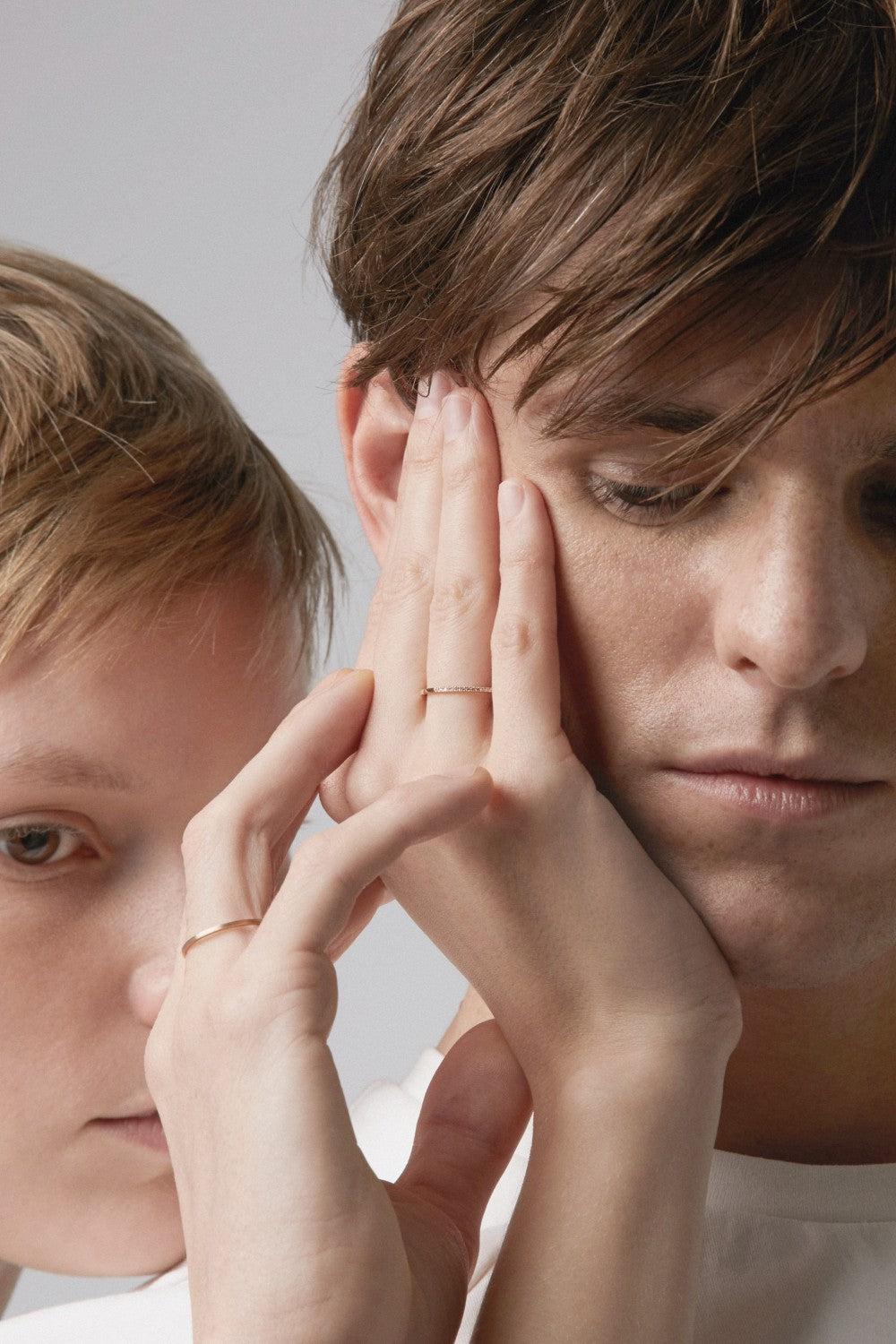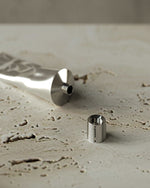28.06.18 in inspirations
the wedding rings


With its radical and ethereal aesthetic rings in 750 white, yellow and red Gold, LE GRAMME has explored the symbol of those who love each other: the wedding ring.
ally with someone, to live, to be stronger, to last... The alliance, this ring which symbolizes the promise of true love, bears its name particularly well.
A circle without beginning or end, the first form traced by men, which becomes an infinite sign when we duplicate it and assemble it, and which opens the space of a “we” when we intersect it. A circle to finally express the cycle of a life to imagine and do with others.
ally with someone, to live, to be stronger, to last... The alliance, this ring which symbolizes the promise of true love, bears its name particularly well.
A circle without beginning or end, the first form traced by men, which becomes an infinite sign when we duplicate it and assemble it, and which opens the space of a “we” when we intersect it. A circle to finally express the cycle of a life to imagine and do with others.
“Ally with someone, to live, to be stronger, to last... The alliance, this ring which symbolizes the promise of true love, bears its name particularly well. »

Six thousand years before our era, the Egyptians already wore a gold wedding ring most often, they saw in this circle a sign of eternity, its central empty space represented for them a passage towards the known and the unknown, the beginning of 'a journey with each other. The choice of wearing it on the ring finger was then linked to their belief - since unfounded - of a vein starting from this finger to go to the heart, this notion was also taken up under the name "Vena Amoris" by the Romans. We owe the engraving on the wedding rings to the latter, although at the time they saw it more as an expression of property than a sign of love!
In China, the wedding ring is also worn on the ring finger, this finger represents the spouse - it is the only one not to move when the two palms are joined with the middle fingers folded towards the inside of the hands and the we try to take off similar fingers two by two - thus the parents (thumbs), the children (little fingers) and the siblings (index fingers) lived or will live independently. But exoticism is sometimes required when wearing a wedding ring, as among Hindu married couples who wear it on the second toe.
In China, the wedding ring is also worn on the ring finger, this finger represents the spouse - it is the only one not to move when the two palms are joined with the middle fingers folded towards the inside of the hands and the we try to take off similar fingers two by two - thus the parents (thumbs), the children (little fingers) and the siblings (index fingers) lived or will live independently. But exoticism is sometimes required when wearing a wedding ring, as among Hindu married couples who wear it on the second toe.
“We owe the engraving on the wedding rings to the latter, although at the time they saw it more as an expression of property than a sign of love! »


Christians, for their part, have used the alliance only since the 9th century, as the sign of a reciprocal presence until the moment of physical absence and beyond death, inscribing the alliance of the spouses in that of God with humanity. Throughout history and the world, the alliance is ultimately always the universal sign of two people who decide to look in the same direction rather than looking at each other.
The material of the wedding ring has long reflected the social level as long as the precious metal was not accessible to all, a rather thorny subject in 15th century Ireland since a marriage consecrated with rings which were not made of gold was not had no legal value. Since then, gold has been democratized for the pleasure of the bride and groom, at LE GRAMME it is shaped into bangles, half-rushes and ribbons of different widths and thicknesses, then worked with a smooth or guilloché print and sometimes set with diamonds.
LE GRAMME offers a collection of alliances with always absolute and universal forms in which everyone can reflect themselves, reveal their love for the other, express or not their beliefs or their rituals: a marriage proposal on odd days only (Russia), a hole in the groom's sock on the big day (Denmark), a drunk with his future father-in-law the day before (Lapland), a female yak as a dowry (Tibet), seven jumps around the fire (India), three sips of sake in three cups (Japan) or even cry in a group for an hour thirty days in a row (Tujia people/China)... Whether we throw rice or peas (Czech Republic), the alliance will always be the symbol of love.
The material of the wedding ring has long reflected the social level as long as the precious metal was not accessible to all, a rather thorny subject in 15th century Ireland since a marriage consecrated with rings which were not made of gold was not had no legal value. Since then, gold has been democratized for the pleasure of the bride and groom, at LE GRAMME it is shaped into bangles, half-rushes and ribbons of different widths and thicknesses, then worked with a smooth or guilloché print and sometimes set with diamonds.
LE GRAMME offers a collection of alliances with always absolute and universal forms in which everyone can reflect themselves, reveal their love for the other, express or not their beliefs or their rituals: a marriage proposal on odd days only (Russia), a hole in the groom's sock on the big day (Denmark), a drunk with his future father-in-law the day before (Lapland), a female yak as a dowry (Tibet), seven jumps around the fire (India), three sips of sake in three cups (Japan) or even cry in a group for an hour thirty days in a row (Tujia people/China)... Whether we throw rice or peas (Czech Republic), the alliance will always be the symbol of love.
“Whether we throw rice or peas (Czech Republic), the wedding ring will always be the symbol of love. »






